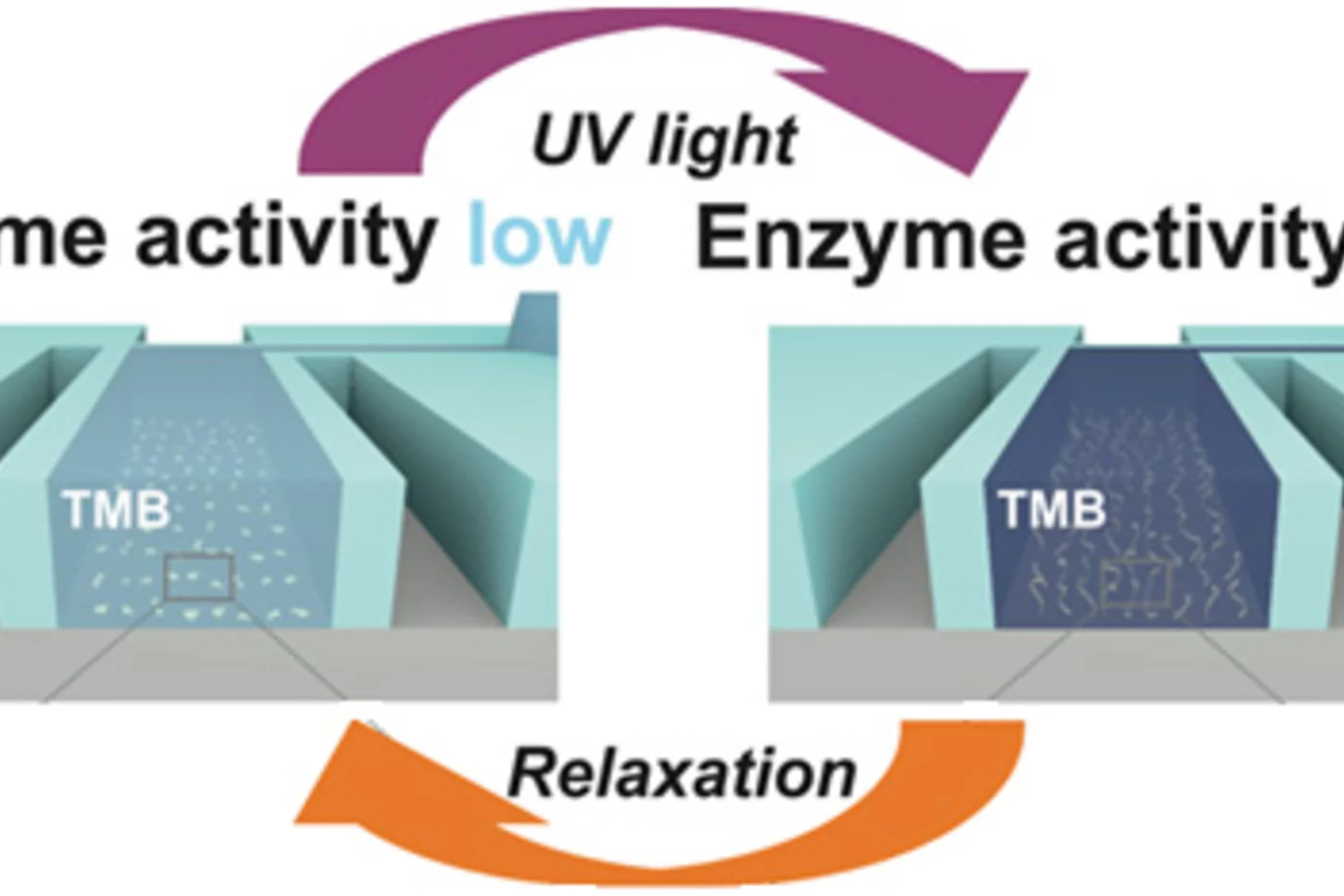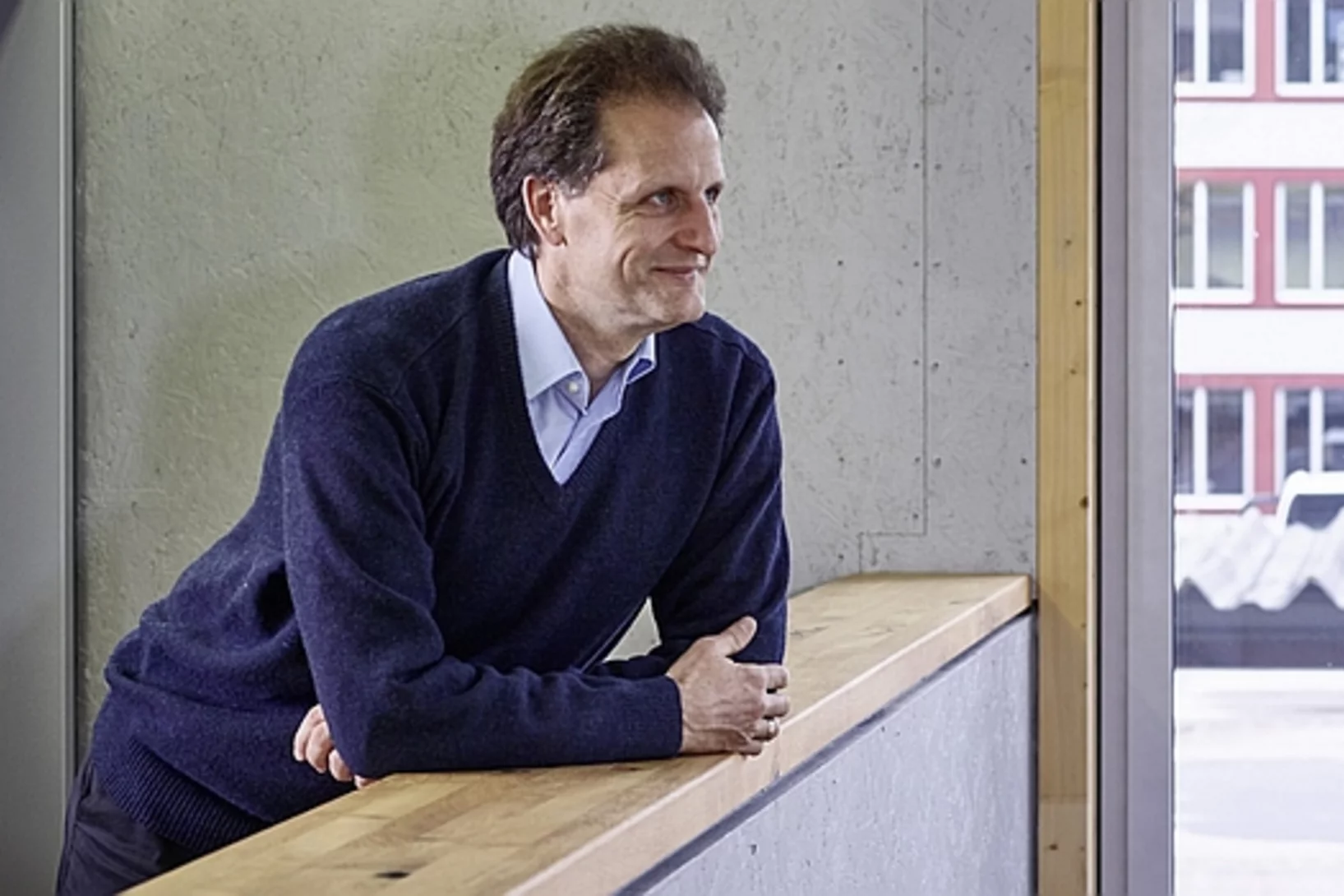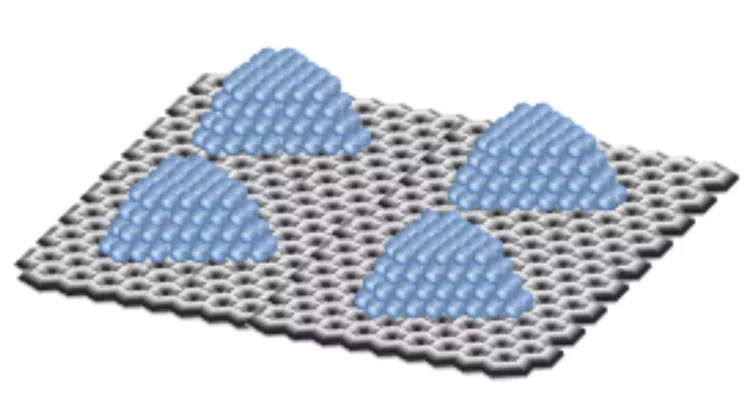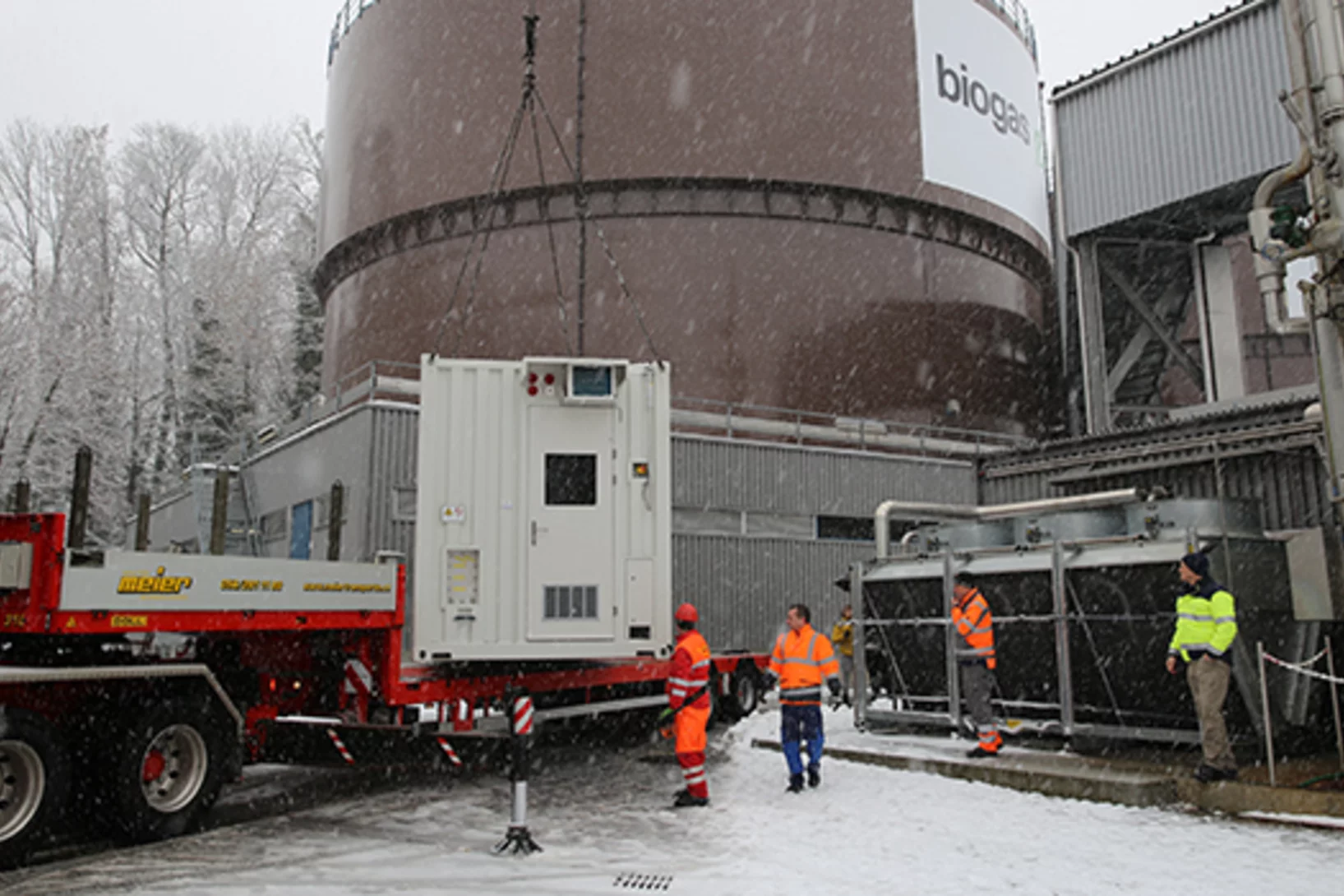Am PSI widmen sich mehrere Projekte wichtigen Forschungsfragen rund um das Coronavirus Sars-CoV-2 und den daraus resultierenden Erkrankungen. Wir informieren über Aktivitäten und Vorhaben, zum Beispiel zu Untersuchungen von Lungengewebe, zur Produktion von Proteinen und Antikörpern oder über Ideen für neue Forschung zu Covid-19.
Nützliche Links
Distinct Evolutions of Weyl Fermion Quasiparticles and Fermi Arcs with Bulk Band Topology in Weyl Semimetals
The Weyl semimetal phase is a recently discovered topological quantum state of matter characterized by the presence of topologically protected degeneracies near the Fermi level. These degeneracies are the source of exotic phenomena, including the realization of chiral Weyl fermions as quasiparticles in the bulk and the formation of Fermi arc states on the surfaces.
Effects of Quantum Spin-1/2 Impurities on the Magnetic Properties of Zigzag Spin Chains
We investigate the effect of Co2+ (spin-1/2) impurities on the magnetic ground state and low-lying spin excitations of the quasione-dimensional spin-1/2 antiferromagnet SrCuO2 by means of neutron scattering, muon spin spectroscopy, and bulk (ac and dc) magnetic susceptibilities. We found that dilute Co doping induces an Ising-like anisotropy and enhances the magnetic ordering temperature rather significantly, but preserves the gapless nature of the spin excitations.
Interlaced zone plates push the resolution limit in x-ray microscopy
A novel type of diffractive lenses based on interlaced structures enable x-ray imaging at resolutions below 10 nm. The fabrication method and the test results of these novel x-ray lenses have been published in the journal Scientific Reports.
Light-switching of enzymatic activity on orthognonally functionalized polymer brushes
UV- and visible light-induced switching of enzymatic activity has been demonstrated using surface-grafted polymer brushes functionalized with microperoxidase MP-11 and spiropyran mojeties. Integration into an optofluidic device allowed reversible switching of the enzymatic activity under flow.
Room-temperature helimagnetism in FeGe thin films
Chiral magnets are promising materials for the realisation of high-density and low-power spintronic memory devices. For these future applications, a key requirement is the synthesis of appropriate materials in the form of thin films ordering well above room temperature. Driven by the Dzyaloshinskii-Moriya interaction, the cubic compound FeGe exhibits helimagnetism with a relatively high transition temperature of 278 K in bulk crystals.
Cover page of CHEMCATCHEM
A paper titled "Optimization of the Reaction Conditions for Catalytic Fast Pyrolysis of Pretreated Lignin over Zeolite for the Production of Phenol" by Zhiqiang Ma is published in ChemCatChem and made it on the cover of issue 6/2017.
Silicon pixel barrel detector successfully installed in the CMS experiment
Middle of February the upgraded CMS silicon pixel barrel detector has been moved from PSI to CERN and was successfully installed in the CMS experiment.
Willkommen in Esiville
Eine neue Besucherstation am PSI erzählt die Geschichte einer Schweizer Stadt, die von einer herkömmlichen Energieversorgung auf eine Energieversorgung mit neuen erneuerbaren Energien umsteigt.
Spiral spin-liquid and the emergence of a vortex-like state in MnSc2S4
Spirals and helices are common motifs of long-range order in magnetic solids, and they may also be organized into more complex emergent structures such as magnetic skyrmions and vortices. A new type of spiral state, the spiral spin-liquid, in which spins fluctuate collectively as spirals, has recently been predicted to exist.
In Start-up-Firmen ist das Machen überlebenswichtig
Lange war er Pharma-Manager bei Roche, jetzt ist er Gründer eines Biotech-Unternehmens auf dem Gelände des Paul Scherrer Instituts PSI: Michael Hennig kennt die Trends der Medizinbranche. Im Interview erklärt er, warum die Medizin der Zukunft die Innovationskraft öffentlich geförderter Forschung braucht und warum er für sein Start-up leadXpro die Nähe zum PSI gewählt hat.
Ice-core evidence of earliest extensive copper metallurgy in the Andes 2700 years ago
Although copper (Cu) was essential for the wealth of pre- and post-colonial societies in the Andes, the onset of extensive Cu metallurgy in South America is still debated. Based on a 6500 year ice-core Cu record from Illimani glacier in Bolivia we provide the first complete history of large-scale Cu smelting activities in South America. Earliest anthropogenic Cu pollution was found during the Early Horizon period ~700-50 BC. We attribute the onset of intensified Cu smelting in South America to the activities of the central Andean Chiripa and Chavin cultures ~2700 years ago. This study provides for the first time substantial evidence for extensive Cu metallurgy already during these early cultures.
1000 Structures solved at X06DA-PXIII
The macromolecular crystallography beamline X06DA-PXIII has reached 1,000 structures in the Protein Data Bank (PDB) on February 22, 2017.
Intermicellar Interactions and the Viscoelasticity of Surfactant Solutions: Complementary Use of SANS and SAXS
In ionic surfactant micelles, basic interactions among distinct parts of surfactant monomers, their counterion, and additives are fundamental to tuning molecular self-assembly and enhancing viscoelasticity. Here, we investigate the addition of sodium salicylate (NaSal) to hexadecyltrimethylammonium chloride and bromide (CTAC and CTAB) and 1-hexadecylpyridinium chloride and bromide (CPyCl and CPyBr), which have distinct counterions and headgroup structures but the same hydrophobic tail.
Switzerland at the Quantum Crossroads document endorsed by QTC@PSI members
“Switzerland at the Quantum Crossroads” outlines the current quantum science and technology landscape in Switzerland, explains the promises of this technology and outlines the required steps for Switzerland to leverage its leadership in this space.
IrO2‑TiO2: A High-Surface-Area, Active, and Stable Electrocatalyst for the Oxygen Evolution Reaction
We have developed a synthetic approach to highsurface-area chlorine-free iridium oxide nanoparticles dispersed in titania (IrO2-TiO2), which is a highly active and stable OER catalyst in acidic media. Operando X-ray absorption studies demonstrate the evolution of the surface species as a function of the applied potential, suggesting the conversion of the initial hydroxo surface layer to the oxo-terminated surface via anodic oxidation.
New magnetic phase in the nickelate perovskite TlNiO3
The RNiO3 perovskites are known to order antiferromagnetically below a material-dependent Néel temperature TN. We report experimental evidence indicating the existence of a second magnetically ordered phase in TlNiO3 above TN = 104K, obtained using nuclear magnetic resonance and muon spin rotation spectroscopy.
PERFORM-60: Modelling the Ageing of Reactor Vessel Steels
The main threat to the reactor pressure vessel (RPV) operational safety is certainly the radiation damage that hardens and embrittles the steel it is made of. Four decades of research worldwide have allowed understanding and monitoring the phenomena that come into play. At the computational level, a simulation platform, PERFORM-60, has the ambitious aim of predicting the steel evolution for most RPV and operational conditions. It was initially elaborated in the frame of the EU project of the same acronym and is currently further developed to be the end-product of the on-going H2020 EU project SOTERIA. As a contribution of the Laboratory for Reactor Physics and Systems Behaviour (LRS) to SOTERIA, the platform has been rigorously assessed for the first time since its release on a real case study of a Swiss RPV. This critical assessment has been acknowledged by the community and serves as basis for improvements and future developments of the platform within SOTERIA.
Meeting on future directions with Mu3e in Wengen
We spent four days in Wengen, Switzerland, discussing ideas for physics with the Mu3e apparatus beyond the search for the lepton-flavour violating decay of the muon to three electrons. Collaboration members and theorists presented new ideas for future measurements with the high acceptance, high resolution Mu3e spectrometer using high intensity muon and pion beams at PSI. Technical challenges and promising R&D directions related to high-intensity data taking were also discussed in detail.
Carlos Vaz Honored by the American Physical Society as Outstanding Referee 2017
SIM beamline scientist Carlos Vaz was recognized as outstanding referee for providing high quality peer review for the journals of the American Physical Society (APS).
Magnetic Field Dependence of Excitations Near Spin-Orbital Quantum Criticality
The spinel FeSc2S4 has been proposed to realize a near-critical spin-orbital singlet (SOS) state, where entangled spin and orbital moments fluctuate in a global singlet state on the verge of spin and orbital order.
Wie die Schweiz 2050 ihren Strom beziehen könnte
Das Labor für Energiesystem-Analysen des Paul Scherrer Instituts PSI untersucht, wie die Schweizer Stromversorgung bis zum Jahr 2050 unter verschiedenen Bedingungen aussehen könnte. Auf Basis der Berechnungen können die Forschenden des Labors Aussagen über zukünftige Entwicklungen treffen und zum Beispiel bestimmen, wie sich eine ehrgeizige CO2-Einsparung mit möglichst niedrigen Kosten erreichen liesse.
Deutschlandfunk: Ice-core evidence of earliest extensive copper metallurgy in the Andes 2700 years ago
Listen to an interview with Anja Eichler and Margit Schwikowski featuring new insights to the ancient copper metallurgy in the Andes as derived from ice-core archives.
Mu3e review at the PSI user meeting
In the context of the annual PSI user meeting, the Mu3e experiment underwent a detailed review by the research committee for particle physics at the ring cyclotron, discussing the preliminary version of the phase I Mu3e technical design report.
Probing current-induced magnetic fields in Au|YIG heterostructures with low-energy muon spin spectroscopy
We investigated the depth dependence of current-induced magnetic fields in a bilayer of a normal metal (Au) and a ferrimagnetic insulator (Yttrium Iron Garnet—YIG) by using low energy muon spin spectroscopy (LE-μSR). This allows us to explore how these fields vary from the Au surface down to the buried Au|YIG interface, which is relevant to study physics like the spin-Hall effect.
In-situ Studies of the Reactivity of Model Catalysts: Surface Chemistry from flat surfaces to nanoparticles
On 7th February Dr. Christian Papp from University Erlangen (Germany) is visiting the SIM beamline and will give a Photon Science Seminar talk with the title: "In-situ Studies of the Reactivity of Model Catalysts: Surface Chemistry from flat surfaces to nanoparticles"
Historisches Kupfer, gefangen im Eis
Wann die Kupferproduktion in Südamerika begann, war bislang unklar. Von den frühen Hochkulturen in Peru, Chile und Bolivien sind kaum Überlieferungen und Artefakte erhalten. Forschende des Paul Scherrer Instituts PSI in Villigen (Schweiz) sind dem Geheimnis nun trotzdem auf die Spur gekommen. Durch die Analyse des Eises am Illimani-Gletscher in den bolivianischen Anden fanden sie heraus: In Südamerika wurde etwa ab dem Jahr 700 v. Chr. Kupfer gewonnen.
Thomas Lippert new Editor-in-Chief of Applied Physics A
Prof. Dr. Thomas Lippert has been appointed as new "Editor in Chief" of the journal Applied Physics A(link is external). He succeeds Michael Stuke who served Applied Physics A more than 20 years as an Editor in Chief.
Im kalten Wasser
Martin Ostermaier wollte aus der Komfortzone der Wissenschaft ausbrechen. Statt mit Pipetten setzt sich der Biochemiker nun mit Investoren und Patentrecht auseinander.
A Miniaturized Biaxial Deformation Rig for in situ Mechanical Testing
Researchers at PSI have developed a new unique miniaturized biaxial deformation rig, which allows to apply in-plane biaxial stress states with arbitrary stress ratios and to perform strain path changes on thin-sheet metals. The device is optimized for in situ usage inside a scanning electron microscope and at synchrotron beam lines.
Höhere Methan-Ausbeute aus Bioabfällen
In den Schweizer Bioabfällen schlummert ein grosses Energiepotenzial. Denn aus ihnen lässt sich wertvolles Methan gewinnen, der Hauptbestandteil von Erdgas. Mit einer am PSI entwickelten Technologie könnte künftig die Methan-Ausbeute aus Bioabfällen deutlich gesteigert werden. Ein zusammen mit Energie 360° durchgeführter Langzeittest am Vergär- und Klärwerk Werdhölzli soll nun die Technologie auf ihrem Weg zur industriellen Anwendung weiter vorantreiben.



























